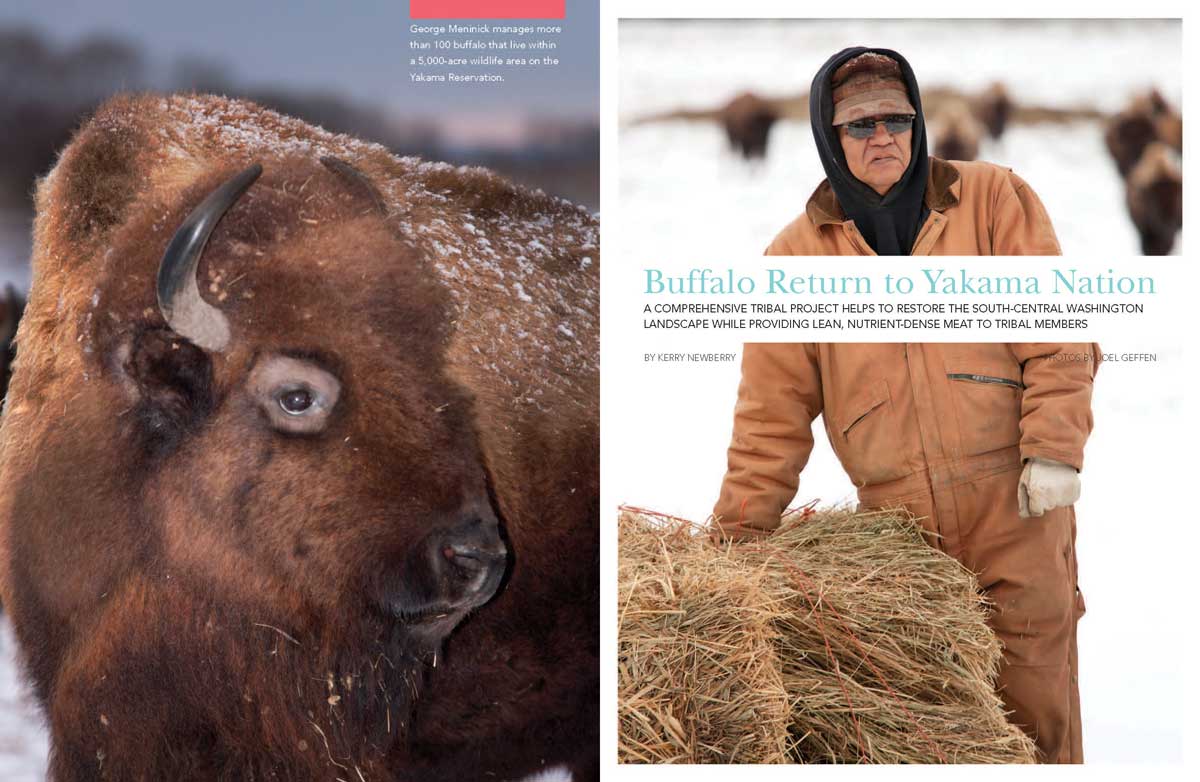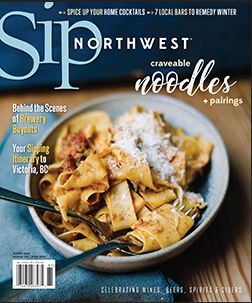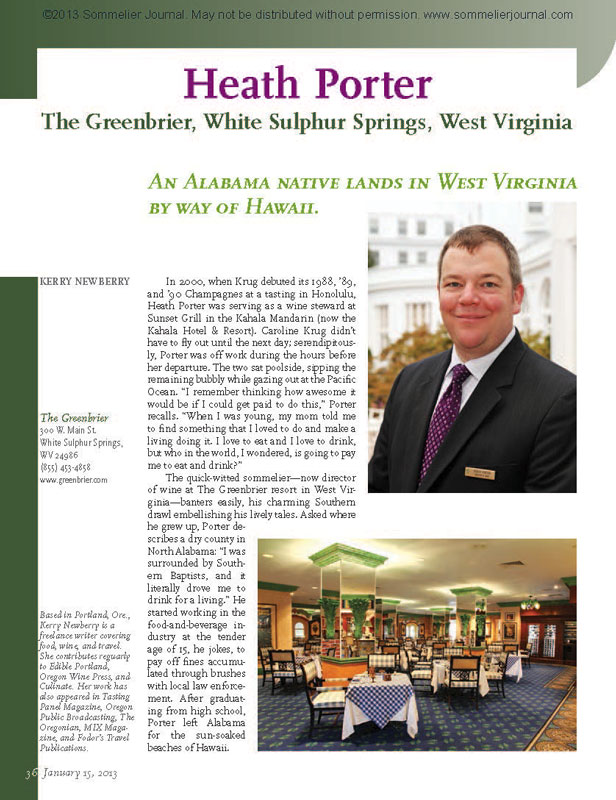Buffalo Return to Yakama Nation

A comprehensive tribal project helps to restore the south-central Washington landscape while providing lean, nutrient-dense meat to tribal members
The stark western sky of Toppenish ripples with no end in sight. The bluegray hues enchant like a stormy sea. Tucked into the eastern slopes of the Cascades, Toppenish sits in a remote area of south-central Washington, about twenty miles south of Yakima. The town is located entirely within the bounds of the Yakama Reservation, an area that covers 2,152 square miles.
Just outside of town, tufts of sagebrush, chokecherry and golden currant dot the amber fields. Bluebunch wheatgrass, squirreltail and needleand- thread, all recently planted native grasses, dig their roots into the arid ground. Native bighorn sheep, pronghorn antelope and the Greater Sage-Grouse, threatened by overgrazing but reintroduced by the tribe in 2006, live in this shrub-steppe habitat. Slowly, native terrain and wildlife that had disappeared years ago due to habitat loss and forced cultural assimilation are being restored through tribal efforts.
As the landscape breathes back to life, Yakama Nation is awakening another iconic animal from their past. Arlen Washines, Yakama tribal member, recounts the legend of how the buffalo vanished from the tribe’s physical and cultural worlds.
I was told by my elder a story, when she showed to me a shale rock formation on the north slope of Toppenish Ridge. It was a huge formation—some 100 by 200 feet—and it was the outline of a buffalo. She told me the buffalo and mountain goat got into a fight, and the prize was a woman, and that whoever lost had to leave. This place was where the goat slammed the buffalo into the hillside.
In the early 1800s, the majestic animal roamed the Great Plains by the tens of millions in herds so vast that observers described prairies as “black and moving” and compared the sound of approaching buffalo to “roaring avalanches, grand armies and thunder.”
Then, in less than a century, more than 60 million buffalo were killed. Overhunting, the calculated slaughter of buffalo by the United States Government and the completion of the transcontinental railroad decimated the population to just over 1,000 by 1890. Buffalo were on the verge of extinction. Until now.
The Return of Tsoo-thlum
Yakama Nation is one of 59 member tribes in 19 states that comprise the Intertribal Buffalo Council (ITBC), a nonprofit tribal organization headquartered in South Dakota. It was founded in 1990 with the mission to restore buffalo to tribal lands as a means of preserving the various historical, cultural, traditional and spiritual relationships each holds with the animal for future generations. To date, ITBC members collectively own and manage 15,000 buffalo.
“Tribes that have buffalo herds have a sense of pride because they know they are doing something that was, and is, important to tribes,” says Jim Stone, a Yankton-Yanktonai Sioux and executive director of the ITBC.
When Stone’s tribe, the Yankton Sioux, reintroduced the buffalo, it also redeemed cultural practices that surrounded the harvesting of animals— prayer, songs and ceremonies—that hadn’t happened in 100 years.
In 1991, Yakama Nation welcomed the long awaited return of the buffalo, known in Yakama dialect as Tsoo-thlum, to their land when the tribe purchased twelve buffalo from Ellensburg, Washington. The herd grew over the years, peaking at around 300 buffalo. Now more than 100 buffalo roam under the watch of Toppenish Ridge, where lore had the creature cast into a mythic hillside centuries before.
Historically, buffalo played a more central role for the Plains Indians than it did for the Yakama, but the animal was firmly on the periphery of Yakama life and rituals. “We had the salmon, berries and roots for our first foods, and we traded with the Plains tribes for buffalo and robes,” says Washines. “My mother told me a story of when she was a small child—how her grandmother would roll her up in a buffalo robe and put her under the seat of the horse buggy when they would go somewhere during the winter.”
Revered for its strength and endurance, the buffalo was a symbol of manhood and was used to honor tribal warriors.
Washines believes there is a reason the buffalo made its own way back to Yakama Nation. “I look at the return of the buffalo to our Yakama people as a medicine—a healing for us—mentally, spiritually and physically,” he says.
Managing the Herd
Yakama Nation’s buffalo herd lives within a 5,000-acre wildlife area of the Yakima River floodplains and adjacent uplands. George Meninick, the current buffalo herd manager, has worked with the herd for more than a decade in what is known as the Tsoo-thlum Project.
Salt-and-pepper sideburns peek from under his black baseball cap. He wears a simple ponytail tucked into a black jacket at the nape of his neck, dusty black boots and a sterling-silver belt buckle.
Each morning, he climbs into a Ford F-350 flatbed truck and drives to Satus Ranch to feed and watch over the herd. “They are the boss,” says Meninick. “I’m not.”
The winter season is the most picturesque, he says. When the ground is snow white, and the dawn sky a silvery mist, all that is visible are eyes peering through a dense veil of fog. Green willow garlands unfold along the banks of the creek in springtime and patches of wild roses splash the range in pink hues. Russian Olive trees provide windbreak year-round, budding creamy yellow flowers in the summer heat.
“When I have kids come out here for camp or school, I tell them this is my office right here,” says Meninick, surveying the landscape through his black aviator sunglasses. “When I’m out here, I enjoy it.”
Meninick points to a tiny red calf, born just last week. The calf is barely the size of one bull’s head. Breeding usually occurs from July to October, and calves are born from April to June. The female buffalos, known as cows, nurse their young for one whole year.
The male bulls are massive, beautiful beasts. Standing at around six and a half feet high, their linebacker shoulders contrast with an elegant crown of horns. The brown-black hair covering their brawny body is thick and craggy.
“Some of our biggest bulls weigh over a ton,” says Meninick. He points to the largest bull in sight. “Even the old man, before he passed away, was bigger than this one is. He was over 30 years old,” he says of the last bull from the original herd. The grandfather buffalo passed away a few months ago.
“They are easy to herd, if you are going the same way they are going,” says Meninick. If not—watch out. “Once you see their tail come up, they are going to come after you. You better run fast,” he says, followed by a wry smile. Buffalo can clock 40 miles per hour.
Remember, he says, that they are wild animals. “We have to respect them in that way, too.” The fence circling the grazing area is mostly irrelevant. “They could walk right through it if they wanted to.” And they do.
Meninick tells a story of a buffalo in Walla Walla that was surrounded by a fence fashioned from old railroad ties. As soon as the corral was complete, one bull ran straight though it. He continued to run through fences all the way from Walla Walla to Pendleton, the distance of about two marathons.
A few days later, the bull returned to the same spot where he had originally burst free. “That’s what they say— wherever they break out from the fence, leave it open for a while; they’ll usually return back to that exact spot.” After ten years with the stalwart creatures, Meninick has experienced many moments of foreboding. “When something is wrong, you can see it,” he says.
One morning a few years ago, Meninick remembers seeing the buffalo running—with nothing chasing them. “They made a great big circle around that pasture and then they started making that circle smaller.” As the buffalo were circling, they moved the calves to the center.
The circle grew smaller and tighter, with the calves deep on the inside. The birds were silent. Meninick was walking and almost fell down. Later he heard that the area experienced an earthquake.
“We have to pay attention to the animals,” he says.
Tsoo-thlum Heals
Meninick recently returned from the annual ITBC gathering. Wildlife preservation and the health benefits of buffalo meat for tribal people were key topics. Yakama Nation is at the forefront of both of these issues.
Over the past 50 years, type 2 diabetes has increased, reaching epidemic proportions throughout the United States. The Native American population currently suffers from the highest rates. According to the National Indian Health Board, Native Americans are three times more likely to be diagnosed with diabetes when compared to the general population. In some tribal communities, the rate is as high as 60 percent.
Historically, the traditional Native American diet was high in protein, low in carbohydrates, and paired with an active lifestyle—all hallmarks of the prevention and treatment of diabetes. According to the ITBC, studies show that Native Americans whose ancestors were hunter-gatherers actually respond differently to carbohydrates than the general U.S. population. Their bodies release more insulin after eating carbohydrates—a risk factor for diabetes.
Buffalo meat is low in cholesterol and nutrient-dense, with 70 to 90 percent less fat than beef. Along with the establishment of the herd, Yakama tribe started to encourage the eating of buffalo meat among its 10,269 enrolled members. Studies reported to the ITBC indicate that including buffalo meat in a diet can reduce the risk of diabetes and other diet-related diseases.
Buffalo and other foods, like salmon and berries, also provide the opportunity to teach through traditional foods. “The buffalo exist in extended family units that are matriarchal and pattern the historic structure of tribal life,” says Stone. “Native people must establish these same family-oriented healthy lifestyles.” This includes deliberate and healthy food intake, an active lifestyle and a support network within the community.
“Tribes have the ability to provide a meaningful foodstuff back to their members, and that is what drives the tribal buffalo restoration efforts,” says Stone.
The Yakama tribe currently runs two grant-funded programs for diabetes management and prevention. In 2000, the Yakama Tribal Community-Directed Diabetes Program launched a buffalo distribution program in partnership with the Tsoo-thlum Project. To counter the fact that one in four Yakama tribal members older than age 50 is affected by diabetes, at one point, the program was responsible for distributing meat to more than 80 tribal elders.
The Healthy Hearts Program, operated by the Indian Health Service, is in its fourth year and is funded by a five-year, $400,000 federal grant. The program is for patients already diagnosed with type 2 diabetes and emphasizes lifestyle and dietary changes. To encourage increased daily activity, the program is bringing back traditional activities such as berry picking, root digging and fishing. Since 2006, buffalo meat harvested from the tribe’s herd has been provided for free to any person enrolled in the program. Distributions occur twice a month.
As the Yakama nurture the buffalo and restore the native landscape, they are rediscovering a balance in health and spirit. Meninick and others are hopeful that along with their stories, the living creatures will be a part of the landscape that their children and grandchildren inhabit.
Arlen Washines still treasures a large Bowie knife left to him by an uncle. “The handle was ivory and carved on it was a Tsoo-thlum,” he says. After the reintroduction of the buffalo to Yakama Nation, he was struck by its significance. “I didn’t know at the time, but today, it all reflects back on the story my elder told me,” says Washines, thinking back to the formation on Toppenish Ridge. “Prophecy, if you will?”
Edible Portland | Spring 2011
Click here to read on the Edible Portland website http://edibleportland.com/buffalo-return-to-yakama-nation/.





